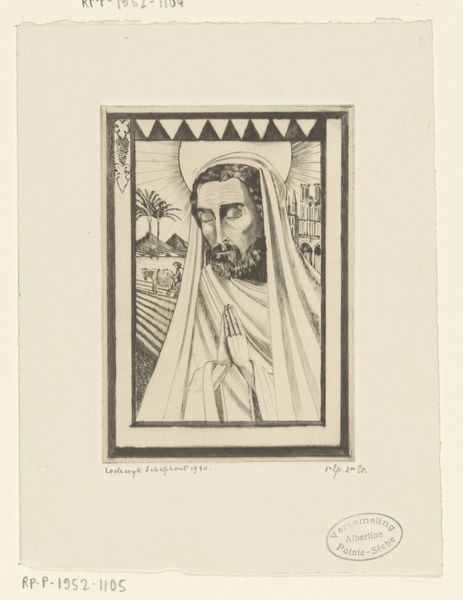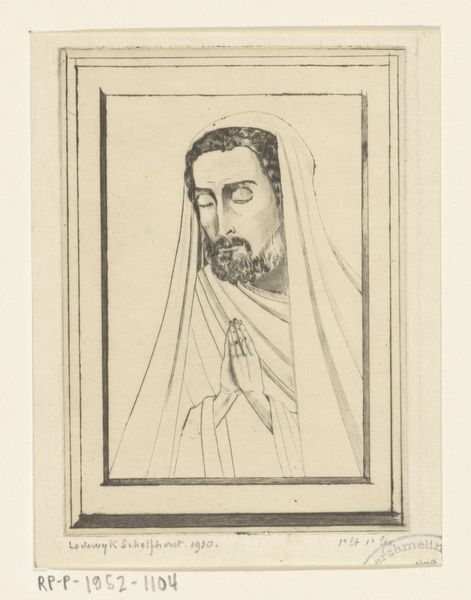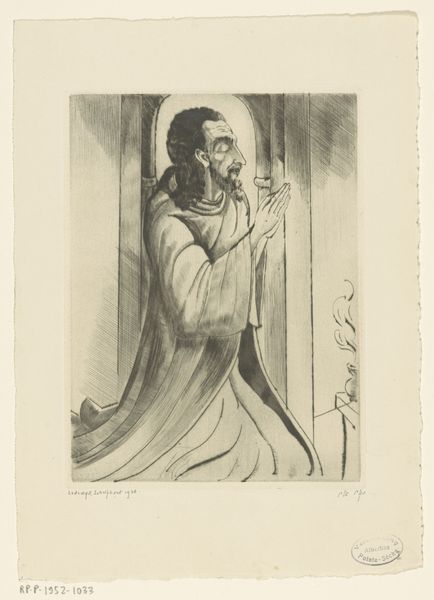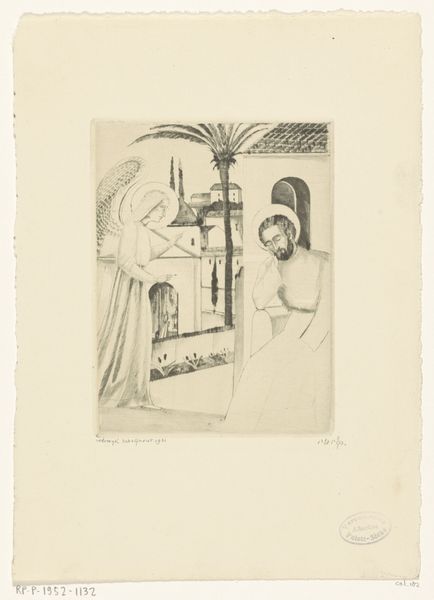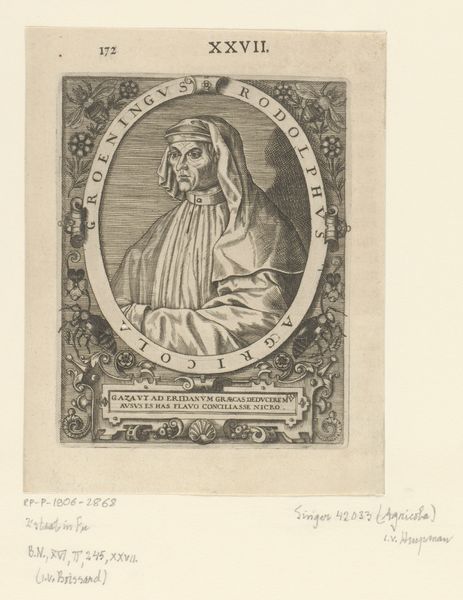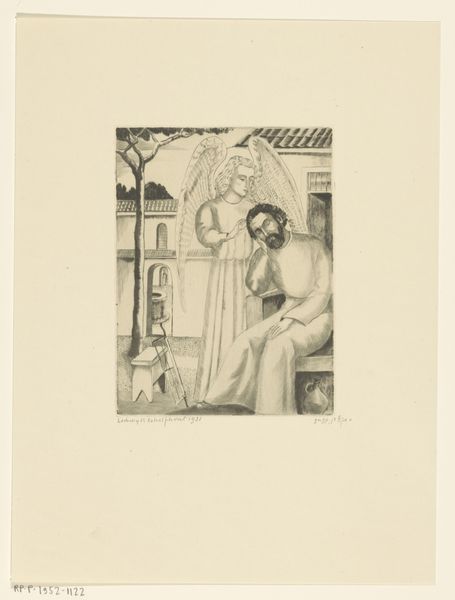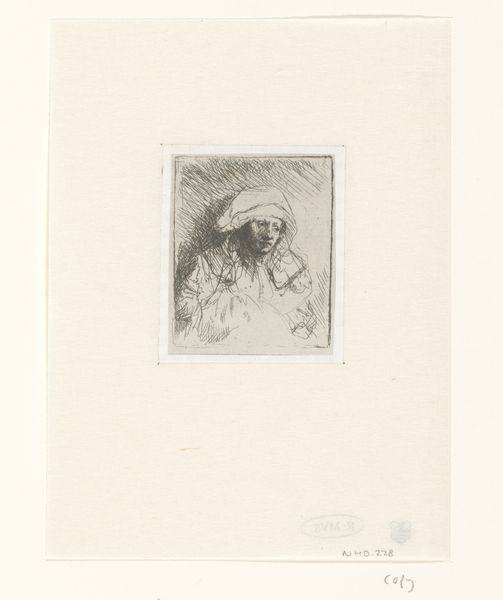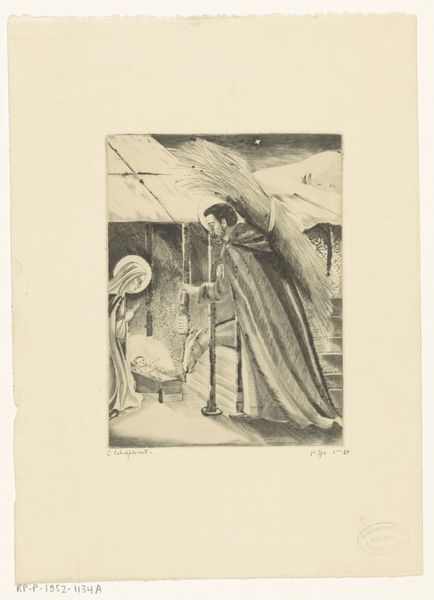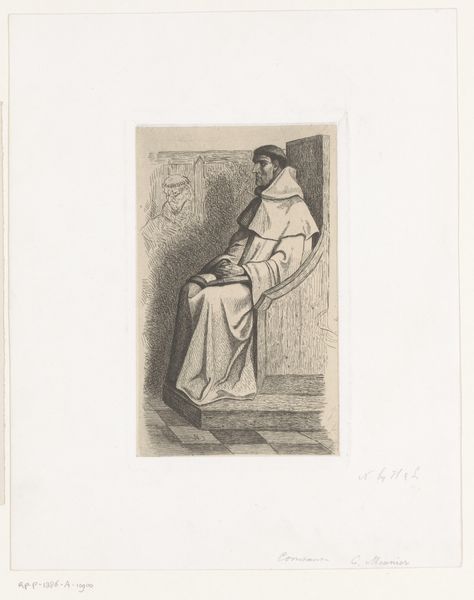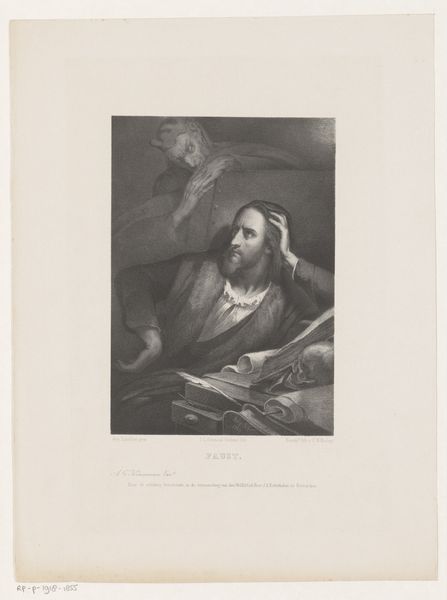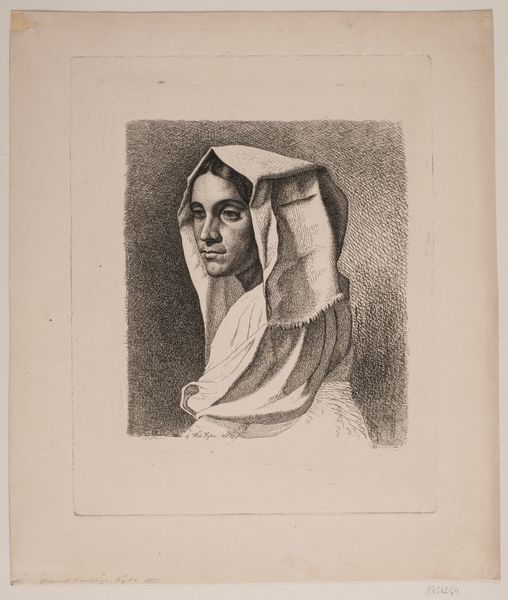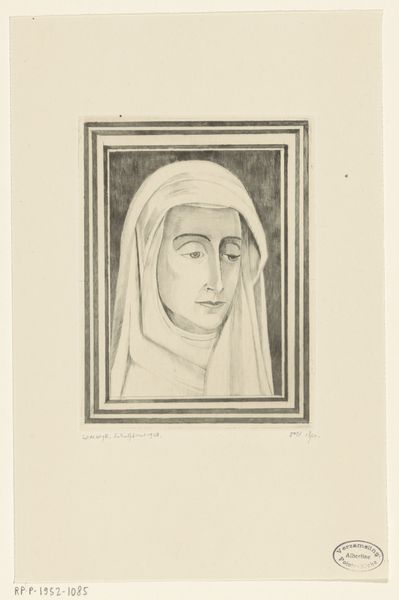
drawing, print, paper, ink, engraving
#
portrait
#
drawing
# print
#
caricature
#
paper
#
ink
#
academic-art
#
engraving
Dimensions: height 120 mm, width 85 mm
Copyright: Rijks Museum: Open Domain
Curator: Lodewijk Schelfhout's 1930 ink engraving, titled "Jozef," presents us with a compelling character study. What are your immediate impressions? Editor: There's a stark solemnity. The contrast created by the engraving feels austere, like a medieval woodcut, but with sharper lines. And the gaze is very…introverted. Curator: It’s interesting you say medieval. Schelfhout was part of a larger interwar revival of interest in early Northern Renaissance art and a reimagining of spiritual themes, even as modernity reshaped society. "Jozef," in that sense, could be interpreted as a symbol of resilience, a return to moral foundations in the face of shifting social norms. Editor: I am struck by how the visible making translates into the emotion of the piece. The layering of ink must have taken meticulous effort. There is something about this intensive, repetitive labor—those thousands of tiny lines giving shape to the form, the halo, the landscape—that speaks to a dedicated purpose, not unlike religious devotion itself. Curator: Precisely! We can further examine the relationship between Jozef's depiction, the framing imagery, and broader historical perceptions. Notice how Schelfhout positions him between symbols of labor—the plowed fields—and sacred iconography—the halo and architectural elements suggesting religious structures. How does this framing impact the representation of religious male figures? Editor: It really is about the method, isn't it? If it were a lithograph it might convey entirely different sensibilities. The choice to engrave suggests a certain commitment to older forms. The labor is baked into the reading of the work. What this says about shifting spiritual values in the social landscape becomes palpable precisely through its production. Curator: This emphasis provides rich ground to understand how societal upheavals translate into creative decisions, impacting material selection and artistic practice. Ultimately, pieces such as "Jozef" push us to reevaluate prevalent views and biases in artistic representation by engaging with challenging subjects and embracing unorthodox methods. Editor: It's about remembering art's connection to physical making. This piece pushes back at idealized notions and offers something very immediate: a hand-worked testament that reminds us to value the slow, deliberate acts that ultimately shape our understanding.
Comments
No comments
Be the first to comment and join the conversation on the ultimate creative platform.
